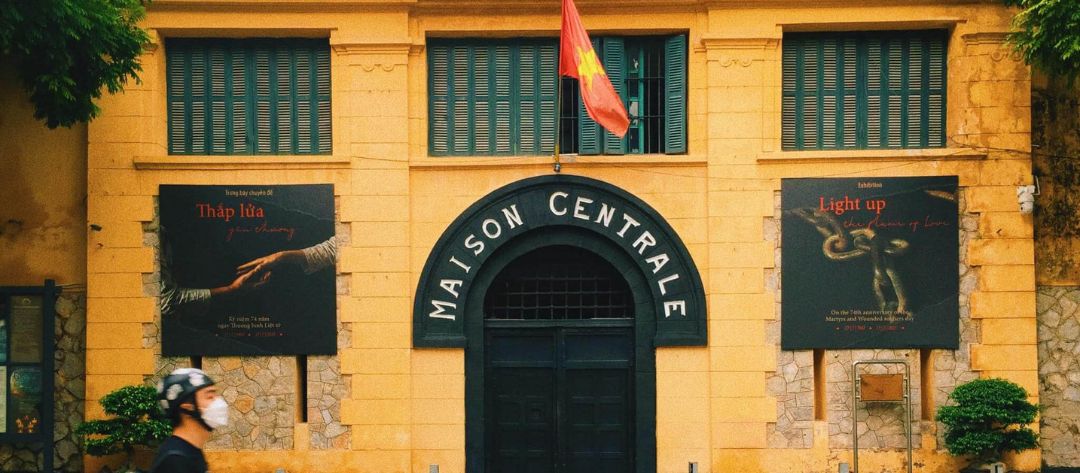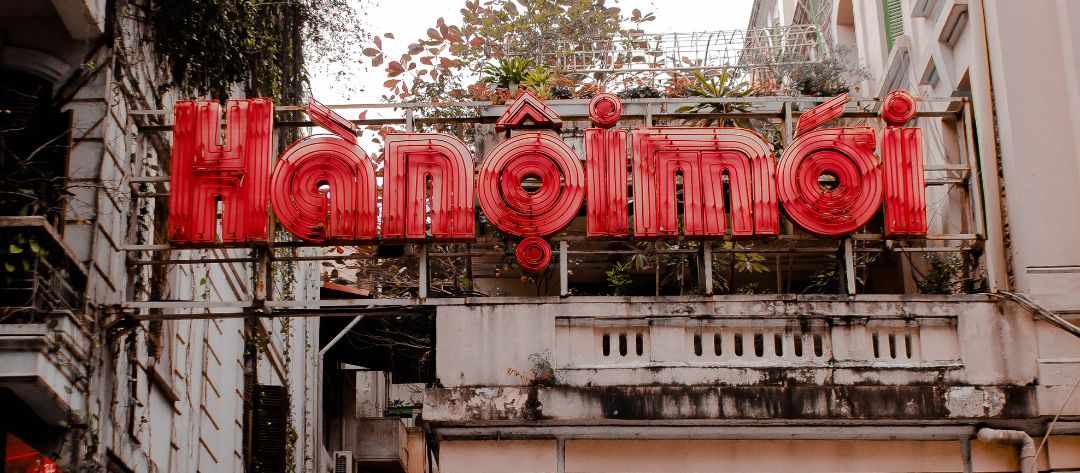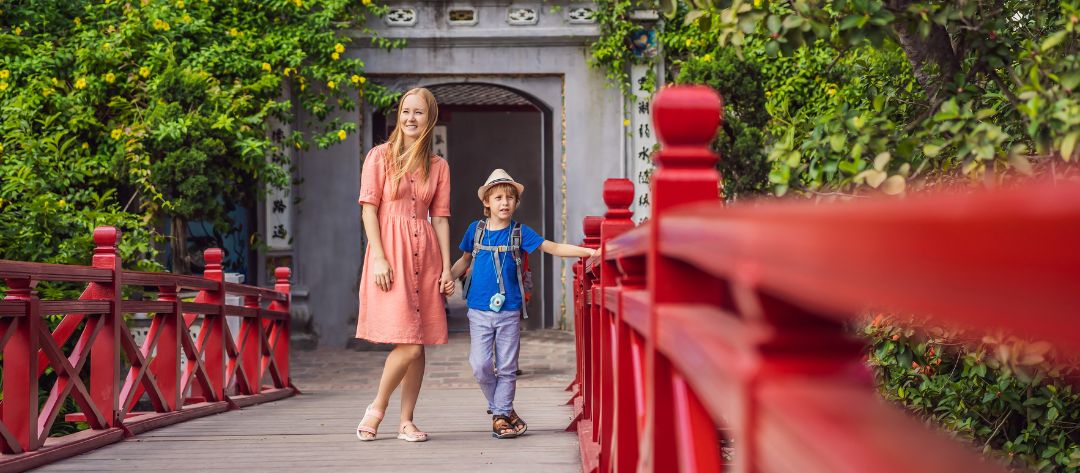Nestled in the heart of Hanoi, Hoa Lo Prison, infamously known as the “Hanoi Hilton,” stands as a haunting reminder of Vietnam’s turbulent history. Over the decades, it has become a symbol of resistance, resilience, and the human spirit’s fight for freedom. Today, it stands as a poignant reminder of Vietnam’s turbulent history, offering visitors a glimpse into the struggles faced by those who endured its harsh conditions.
Join us as we uncover the secrets hidden within its walls and reflect on the stories that shaped a nation.
Historical Background of Hoa Lo Prison
From French Colonial Rule to the Vietnam War
Hoa Lo Prison, also known as Maison Centrale or the “Hanoi Hilton,” is a significant historical site located in the heart of Hanoi. Constructed by the French in 1896, the prison was originally intended to house Vietnamese revolutionaries resisting colonial rule. It was built on land from the Phu Khanh village, known for its pottery production, which inspired the name “Hỏa Lò” due to the fiery kilns that operated day and night nearby.
During the French colonial era, Hoa Lo became a symbol of oppression, where Vietnamese political prisoners faced brutal treatment, often shackled to the floor and subjected to severe beatings by guards. The prison’s infamous guillotine, still on display today, was used for executions, emphasizing the harsh realities faced by those who fought for independence.
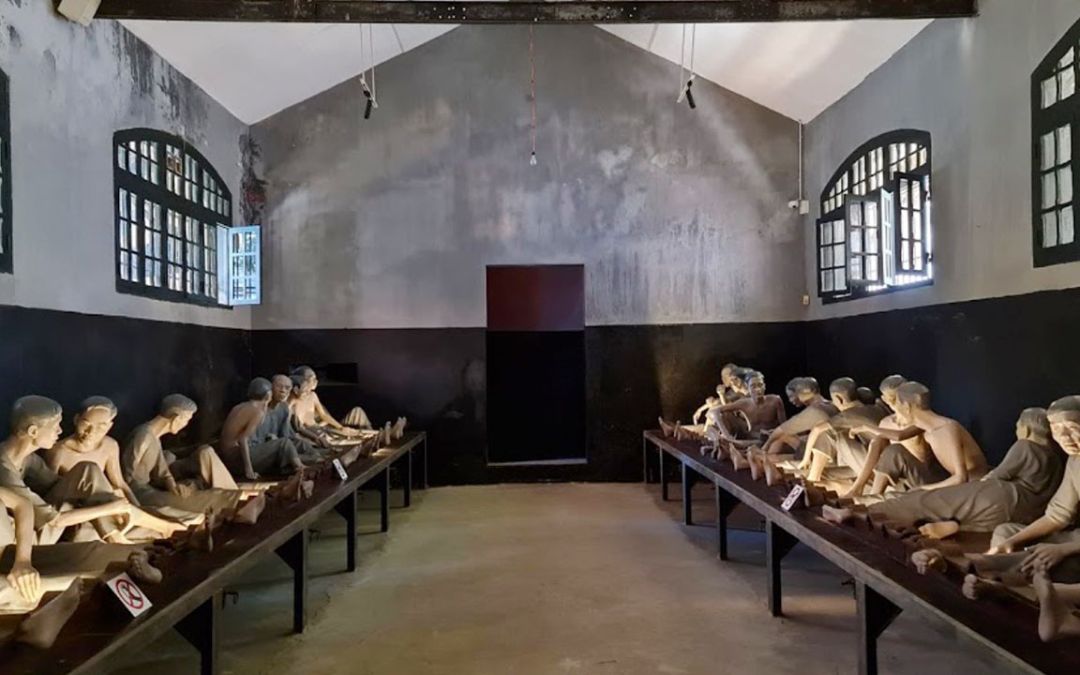
Hoa Lo Prison was built by the French in 1896 to control Vietnamese revolutionaries during colonial rule.
With the outbreak of the Vietnam War, the prison took on a new role as it housed American prisoners of war (POWs), particularly pilots downed during bombing missions over North Vietnam. From 1964 to 1973, Hoa Lo became a site of interrogation for these American captives, some of whom later included prominent figures like John McCain and Douglas Peter Peterson. Ironically, it was the American POWs who dubbed the grim facility the “Hanoi Hilton,” highlighting their sarcasm amid their dire circumstances.
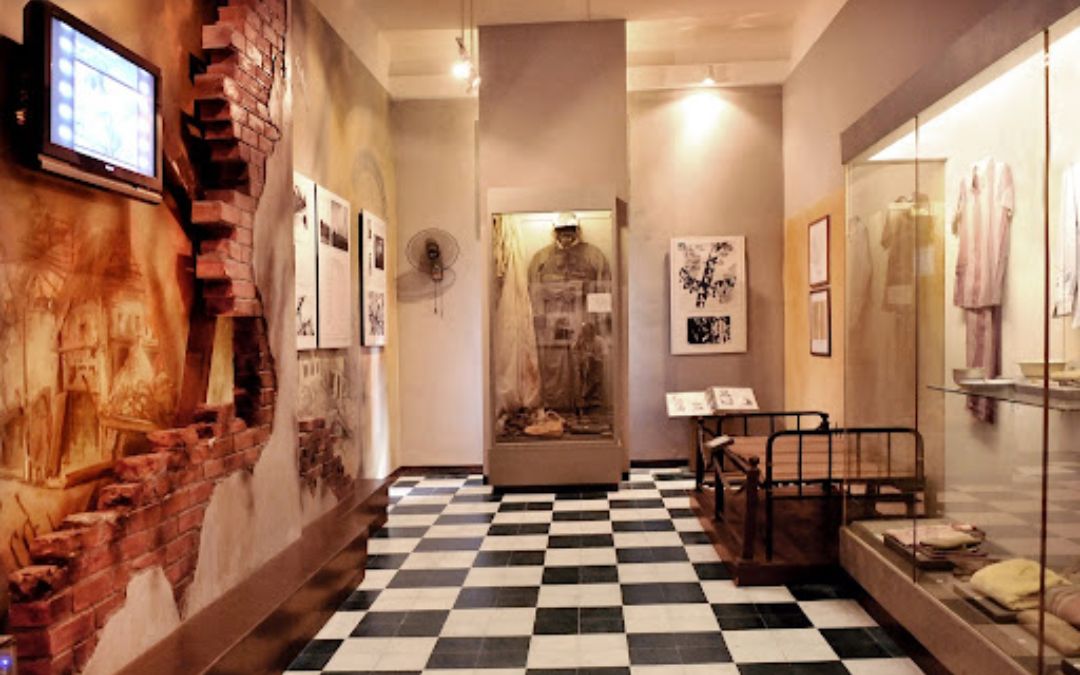
Hoa Lo Prison held American POWs during the Vietnam War, earning the nickname “Hanoi Hilton.”
Harsh Conditions for Vietnamese Revolutionaries
Constructed between 1886 and 1901, Hoa Lo Prison soon became notorious for its brutal conditions. Designed for a mere 500 inmates, it often housed more than 2,000, with overcrowded cells intended for 40 prisoners holding as many as 100. The poor quality of food and lack of hygiene added to the prisoners’ suffering. Within the prison walls, the chilling presence of a guillotine stands as a testament to the violent enforcement of political repression.
Among the darkest areas of the prison are the isolated death row cells, where political prisoners awaited execution for months. These cells, with walls painted black and a height of 3 meters, exuded an oppressive gloom, reflecting the despair of those held within. Yet, even in such dire circumstances, many prisoners expressed their defiance through poetry and writing, keeping their spirits alive.
The prison also housed female political prisoners who faced additional hardships, especially if they were pregnant or had young children. The conditions for women were dire, leading to a high mortality rate among female inmates. Despite these challenges, women played a vital role in the fight for independence alongside their male counterparts.
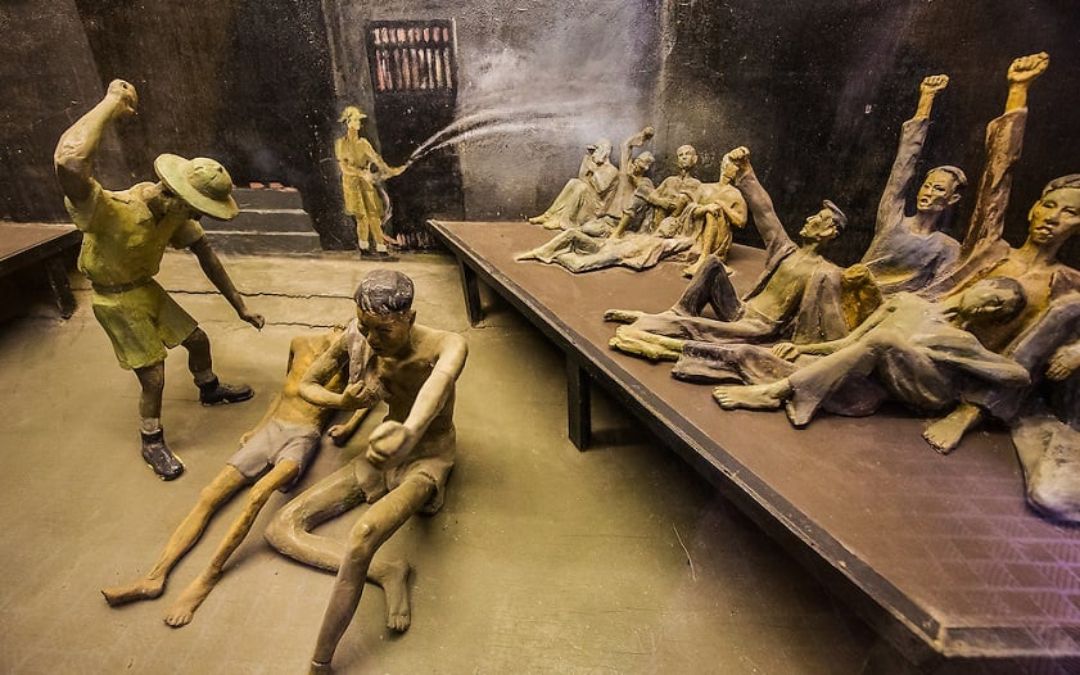
Vietnamese revolutionaries suffered harsh conditions in Hoa Lo, including overcrowded cells, starvation, and forced labor.
How To Visit Hoa Lo Prison
Getting there
Located at No. 1, Hoa Lo Street, Hoan Kiem District, Hanoi, this historical is easily accessible from various parts of the city. Just a 15-minute stroll from Hoan Kiem Lake, visitors can reach the prison on foot, by bike, or using different modes of transportation.
- By car or motorbike: From Hoan Kiem Lake, head towards Le Thai To Street, then follow the road straight to Ba Trieu. Turn right onto Hai Ba Trung Street, continue for about 500 meters, and finally turn left onto Hoa Lo Street. Parking is available at the prison entrance.
- By taxi: A taxi ride from the city center is convenient. It’s advisable to ask your hotel receptionist to book a taxi for you to avoid overcharging.
- By Grab or Xanh SM: Using the Grab or Xanh SM app for a car or motorbike is an efficient and cost-effective option. It costs around $4, while a motorbike is even cheaper and will take about 15 minutes from Hoan Kiem Lake.
- By Public Bus: Several bus lines, including 02, 09, 32, 34, and 38, stop near the prison. The bus fare is just $0.5 per person, making it an economical choice.
- Walking or biking: If you enjoy exploring on foot or by bicycle, consider renting a bike in the Old Quarter and taking a leisurely ride to the prison. This way, you can take in more of the local scenery along the route.
Opening hours: 8:00 to 17:00 daily (including holidays)
Ticket price: $2 (50,000 VND) per person
Discounted tickets (50% off):
- People with severe disabilities
- Seniors (60 years old and above)
- Students (with valid student ID)
- Social policy beneficiaries
Free entry:
- People with extreme disabilities
- Children under 16 years old
Audio guide rental: Available for $2, offering engaging stories and deeper insights into the prison’s history

Visitors can explore Hoa Lo Prison daily, with guided tours available in multiple languages
>> You might want to read: Uncover The Capital Soul On A Walking Tour In Hanoi
What To Explore Inside Hoa Lo Prison
The Architecture of Control
The prison itself was designed as an impenetrable fortress, with 5-meter high walls, barbed wire, and watchtowers monitoring every movement of the inmates. Covering an area of 12,908 square meters, Hoa Lo Prison included guardrooms, health stations, and workshops, all built with quality materials to ensure maximum security. The oppressive architecture reflects the regime’s intent to maintain strict control over prisoners, further enhancing the somber atmosphere.

The prison’s architecture features iron bars, thick walls, and narrow corridors designed for maximum control and surveillance
The Infamous Guillotine
Within the walls of Hoa Lo Prison lies a guillotine, a chilling symbol of the French colonial regime’s brutality. This execution device, designed by Dr. Joseph-Ignace Guillotin, was introduced as a more “humane” alternative to medieval methods of execution.
The guillotine features a wooden table where prisoners lay, with their heads positioned in a circular opening. An iron frame, nearly four meters high, supports the blade, and it is made of steel with a sharpened edge. During executions, the executioner would pull a rope to release the blade, which falls with the force of approximately 60 kilograms, decapitating the prisoner in an instant. This horrifying tool serves as a stark reminder of the prison’s dark history.
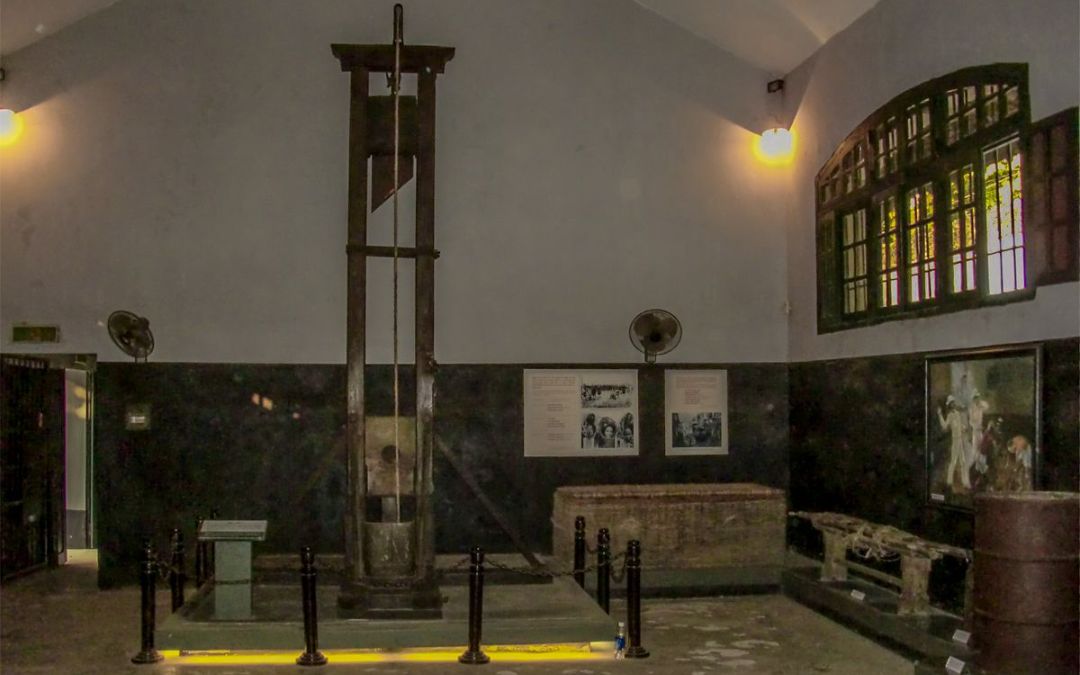
The infamous guillotine once used to execute revolutionaries, still stands as a chilling reminder of past brutality.
Artifacts of Oppression
Visiting Hoa Lo Prison unveils various artifacts that expose the harshness of the French colonial regime.
Food containers reflect the difficult conditions: prisoners were forbidden from using bowls and utensils, prompting them to create makeshift tools from discarded materials. The minimal and poor-quality clothing provided to prisoners often led to discomfort and exposure to harsh weather.
Additionally, torture instruments such as boxing gloves and electric devices reveal the extreme measures colonial authorities would take to suppress dissent.
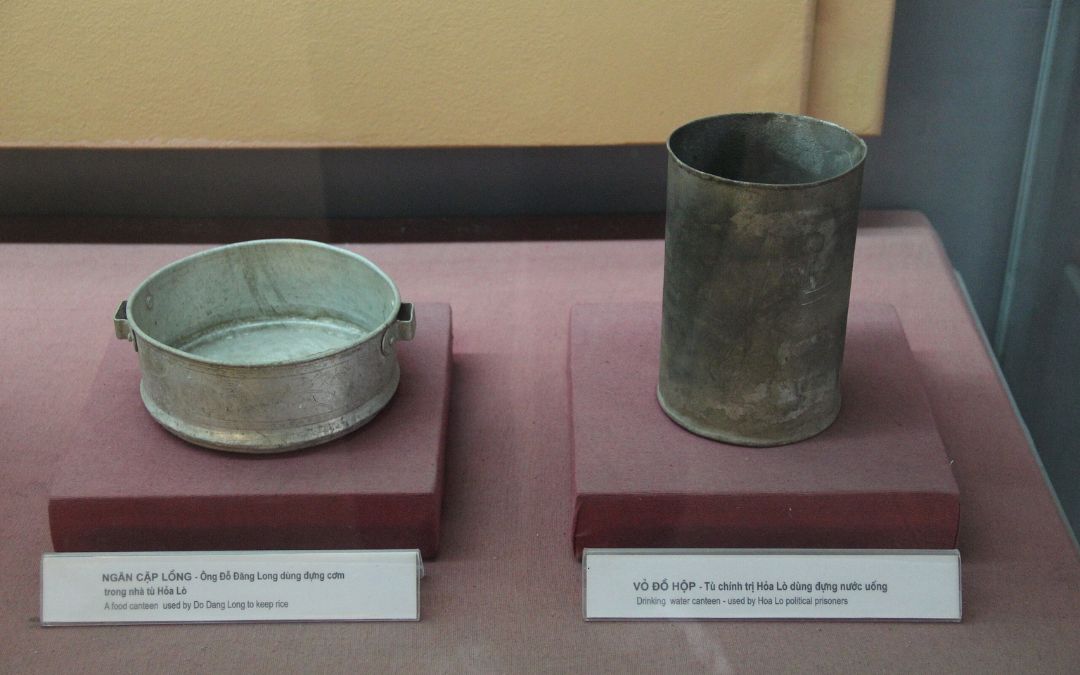
Artifacts such as chains, torture devices, and personal belongings of prisoners display the prison’s oppressive history
The “Friendship” Banyan Tree: A Silent Witness
One of the prison’s most enduring symbols is the banyan tree, planted by political prisoners before 1930. This tree became a gathering place where inmates could breathe fresh air and discuss revolutionary ideas. It witnessed countless exchanges of dreams, hopes, and strategies against colonial oppression, serving as an informal “secret mailbox” for sharing information and distributing revolutionary literature.
The banyan tree is a testament to the resilience and unity of those who suffered within the prison’s walls.

The “Friendship” banyan tree in the courtyard silently witnessed the pain and suffering of many inmates
The Cachot: A Place of Despair
The Cachot, also known as the dark dungeon, is a terrifying part of Hoa Lo Prison. It measures only 4 square meters and is enveloped in darkness, with air that feels suffocating. In this place, prisoners endured severe punishment for organizing protests or attempting to escape. The cement sleeping quarters were designed to increase discomfort, with the heads angled downward, causing blood to rush to the brain.
This space serves as a grim illustration of the inhumane treatment suffered by those who resisted oppression.
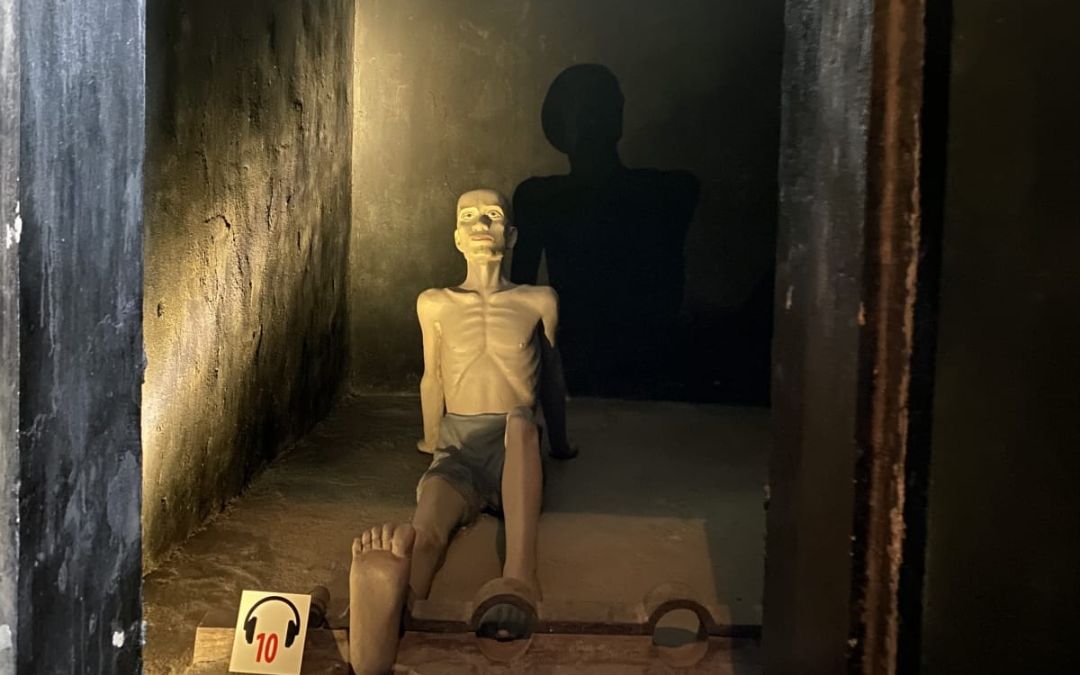
The Cachot, a dark, airless cell, was reserved for prisoners enduring extreme punishment and isolation
What To Experience In Hoa Lo Prison: The Unmissable Sacred Night Tours
Discover the transformative “Sacred Night” series at Hoa Lo Prison, where history and emotion intertwine. This unique night tour invites visitors to immerse themselves in the poignant stories of resilience and sacrifice, particularly honoring female revolutionary prisoners and their contributions during Vietnam’s tumultuous past.
Hoa Lo Prison offers three-night tours; however, Sacred Night 1—Shining Spirit of Vietnam is currently on hold. Below are the details of the remaining two tours.
Sacred Night 2 – Living Like Flowers
The “Sacred Night 2” event provides a powerful tribute to the bravery of female revolutionaries. Through captivating sound and light effects, along with theatrical performances, attendees embark on a journey through time. This immersive experience transports guests from the grim realities of life inside Hoa Lo Prison to the triumphant moments of Vietnam’s fight for independence. The meticulously crafted scenes offer not just stories but vivid reenactments, creating a deeply emotional and unforgettable experience.

Sacred Night 2 focuses on female prisoners’ courage and resilience, symbolized through the metaphor of flowers.
- Time: 19:00 to 21:00 every Friday
- Ticket price: 399,000 VND (approximately $17) for adults and children
- Age suitability: Recommended for ages 8 to 75
Sacred Night 3 – Flame of Youth
This night tour offers participants the chance to step into the shoes of imprisoned soldiers. Set in the very spaces where these individuals once suffered, this event sheds light on their harsh realities. Visitors will engage in interactive experiences, including crawling through underground tunnels that simulate escape attempts from the dark dungeons. This thrilling journey not only entertains but also imparts valuable lessons about freedom and resilience.
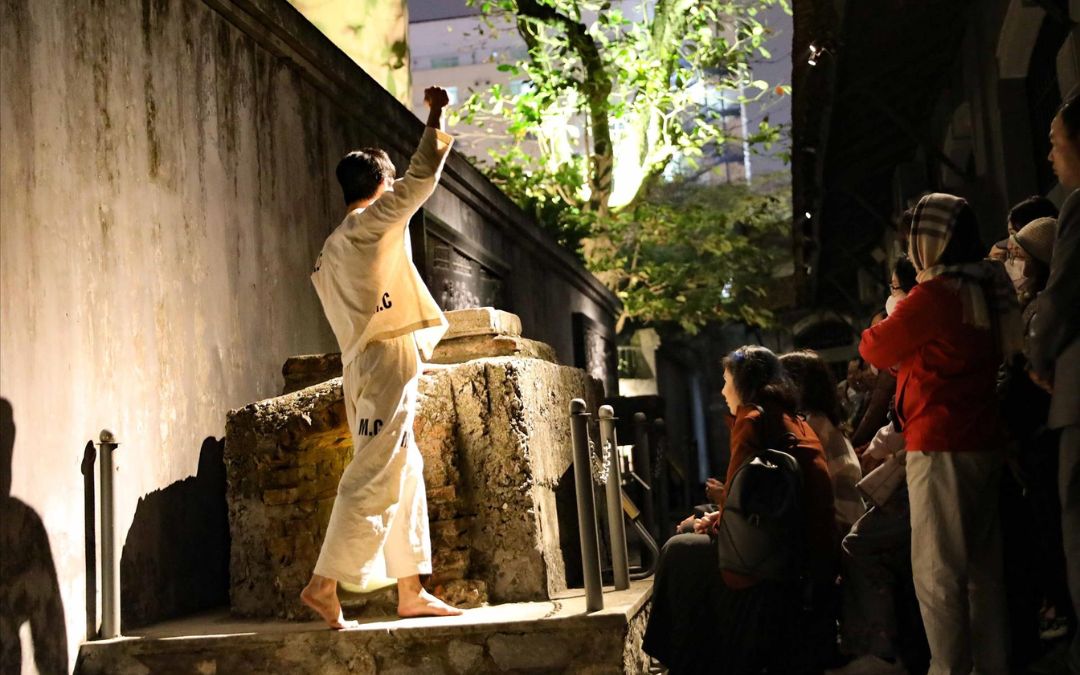
Sacred Night 3 honors young revolutionaries, depicting their unyielding determination despite harsh imprisonment
- Time: 19:00 to 21:00 every Saturday
- Ticket price: 499,000 VND (approximately $21) for adults and children
- Age suitability: Recommended for ages 10 to 75
Culinary Delights at the Hoa Lo Prison Night Tour
In addition to the compelling historical narratives, the Hoa Lo Prison Night Tour features a unique culinary experience. Visitors can savor distinctive dishes made from ingredients sourced directly from the prison grounds, such as bánh lá bàng (water chestnut cake) and thạch bàng (water chestnut jelly), crafted with care using the region’s ancient water chestnut trees.
Guests can enjoy a refreshing cup of bàng lá nếp (sticky rice water chestnut tea) to complement the culinary offerings. The combination of the cakes and tea allows visitors to fully immerse themselves in the flavors and emotions evoked by this historic site.

Guests can enjoy snacks and tea made from banyan tree leaves, symbolizing hope and survival
>> You shoudn’t miss this tour: 7 Day Tour Vietnam Overview
Essential Tips for Visiting Hoa Lo Prison: A Comprehensive Guide
To ensure a meaningful experience at Hoa Lo Prison, consider the following important tips:
- Before visiting, organize your travel plans. If using public transport, account for peak traffic times in Hanoi to avoid delays. For those attending the night tour, which starts at 19:00, aim to arrive 30-45 minutes early.
- Visitors can park their vehicles at the main gate, where free motorbike parking is available. Car parking is also provided nearby, but fees apply according to the parking unit’s regulations.
- While exploring the site, maintain a respectful demeanor. Refrain from smoking, speaking loudly, or touching displayed artifacts. Always adhere to warning signs and the prison’s regulations.
- Bring only essential items, avoiding flammable or explosive materials. Store any bulky luggage in designated areas before entering the prison.
- If you wish to burn incense or lay flowers, please do so exclusively in the memorial area.
- For large groups or educational purposes, contact the management team ahead of time for assistance with preparations.
- Despite weekend crowds, tickets can be conveniently purchased at the entrance without prior reservations. However, if you prefer a guided tour, make sure to schedule it in advance.
- Please help maintain the site’s integrity by not littering and keeping the area clean during your visit.
By following these guidelines, you can enhance your experience and pay proper respect to this significant historical site.
>> Read More: What To Do In Hanoi For 3 Days
Unveil the Hidden Stories of Hoa Lo Prison with Asia Pioneer Travel Now!
Hoa Lo Prison stands as a testament to the indomitable human spirit, where tales of courage, resistance, and hope echo through its walls. This profound historical landmark invites you to reflect on the resilience of those who fought for freedom and justice, even in the darkest of times. Through the Vietnam guided tours offered by Asia Pioneer Travel, you can walk in the footsteps of history, gaining powerful insights into the bravery and sacrifices of both Vietnamese revolutionaries and American POWs.
Let Asia Pioneer Travel help you craft a journey that will not only take you to Hoa Lo Prison but will also leave you with a deeper understanding of Vietnam’s inspiring past. Step into history, and let the stories of resilience shape your experience.

